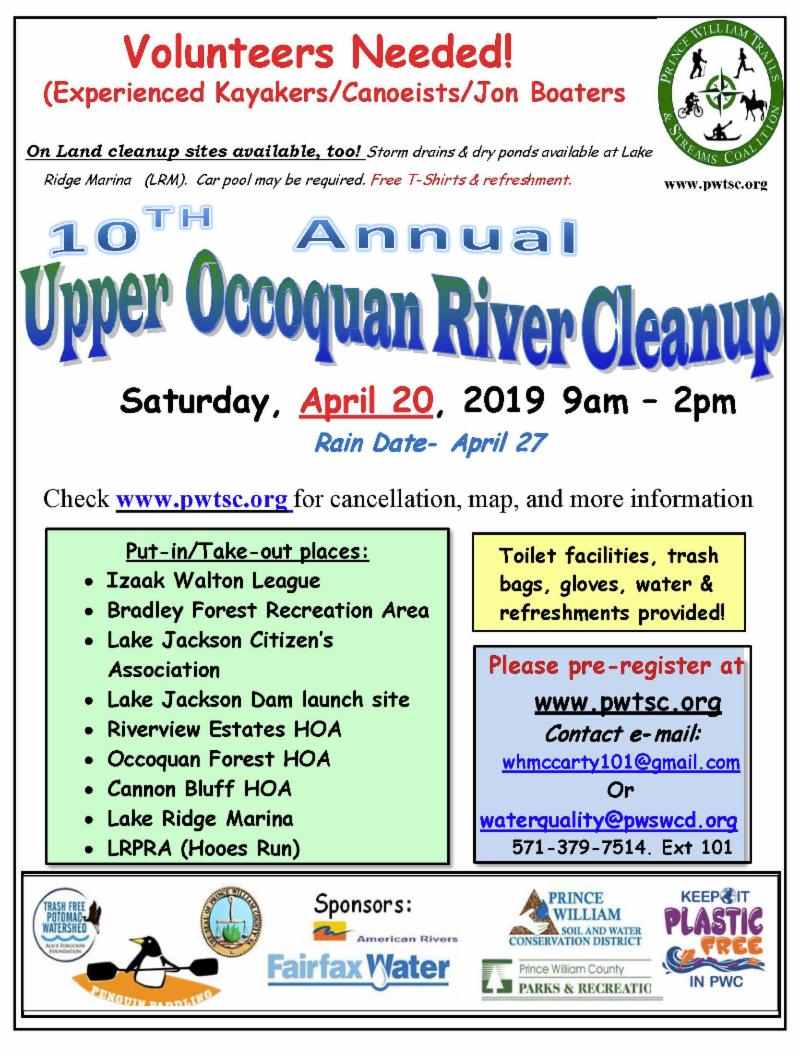ACCEPTABLE MATERIAL FOR RECYCLING AT CURBSIDE OR AT RECYCLING TRAILERS (REVISED 3-25-19):
- Plastics bottles and jugs: #1 and #2 narrow neck and wide mouth containers including soda and water bottles and juice and milk jugs. Rinse out containers. Bottle caps may be replaced after rinsing. No bottles that previously contained hazardous materials (such as oil, flammable materials, chemicals, etc.).
- Aluminum and steel food and beverage cans and empty aerosol cans. Empty and rinse out cans.
- Newspaper and mixed paper (any paper that tears) white/colored paper, magazines, catalogs, books, junk mail (even envelopes with clear windows) and paperboard boxes (e.g. cereal tissue etc.), paper towel and toilet tissue cores. Do not include plastic bags included in newspapers.
- Flattened cardboard and paperboard up to 2 ft. X 2 ft. in size. Do not include cardboard with food residue or plastic liners.
These changes are impacting us in Prince William County. Years ago when I toured the Prince William Landfill I was amazed to learn that we had been sending bales of mixed recyclables to China. The tour included a warehouse filled with bales of recycled material. According to Tom Smith, the director of Prince William Public Works Solid Waste Division, our recycling processing plant is having to find other buyers for the recyclable materials, and recycling processes have slowed due to the higher quality standards demanded.
The first change is that glass cannot remain part of the curbside single-stream recycling. Glass that is collected that way often breaks as it moves through the recycling process. There are no facilities in the region to clean and process glass, much of it ends up in the landfill and glass shards often contaminate other recyclable materials and make them impossible to reuse. No one will take glass contaminated waste.
PW Public Works Solid Waste division is looking at alternatives for recycling glass. They are eliminating glass from curbside collection, but plan to install separate bins for glass at the landfill and Balls Ford Road compost facility. The plan is to take that glass to a local glass crushing facility to eventually be used in construction projects as a replacement for pea gravel.
All our neighboring jurisdictions are struggling with similar recycling challenges. The Prince William County Public Works Department is working with its regional counterparts, along with private trash and recycling companies to try and find ways to manage issues impacting recycling programs throughout the region. However, to solve this problem we need to change our behavior and reduce or eliminate the single use disposable products in our lives to lighten the load.
In addition, we need to stop what the County calls “aspirational recycling.” That is including in the recycling bin items that should not be included, items contaminated with food waste, plastic bags and others. Though, the “aspirational recyclers” are well intentioned, they are just contaminating the recycling stream and the entire truck load end up at the landfill. All solutions begin with us; we need to get better at recycling. Commit to improving your recycle knowledge and practices. In the meanwhile here are some ways to improve your recycling.
The items below are not recyclable and should not be in your recycle bin:
The items below are not recyclable and should not be in your recycle bin:
- Glass- can no longer be recycled in Prince William County
- Wax coated cups (including coffee and soda cups etc.)
- Styrofoam in any form
- Coated food containers (milk cartons and other coated cardboard)
- Cardboard containers soaked with food
- Plastic pimp caps
- Heat treated glass (Pyrex, baking dishes, wine glasses)
- Anything soiled especially Diapers
- Clothing
- Low-grade plastic numbered 3-7 (yogurt containers, toothpaste tubes, margarine and butter tubs, cottage cheese containers, sour cream containers, vegetable and salad containers and bags.
- Any item with food or beverage contamination. Wash everything!







